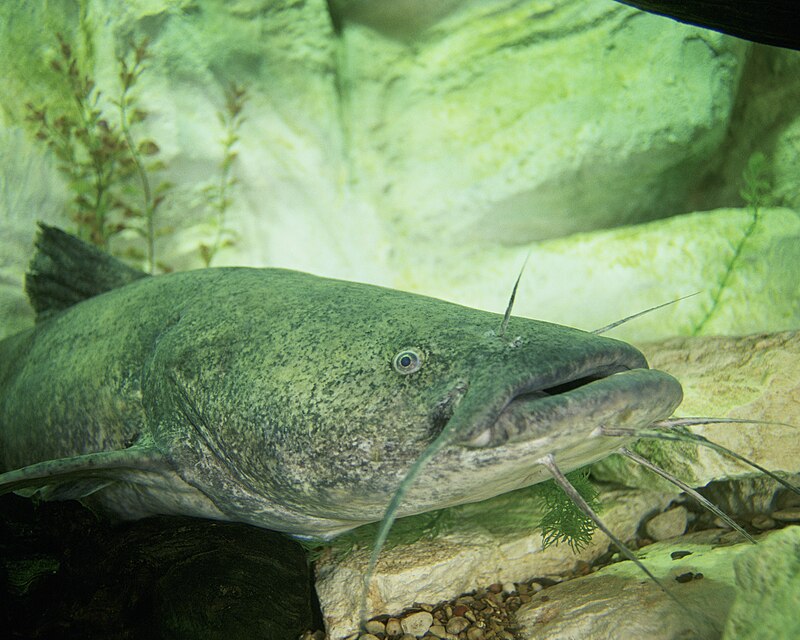
catfish.jpg
Catfish
Definition:
Catfish refers to various species of freshwater fish belonging to the order Siluriformes, characterized by their whisker-like barbels, scaleless bodies, and broad, flattened heads. Catfish species include channel catfish (Ictalurus punctatus), blue catfish (Ictalurus furcatus), and others, prized for their mild flavor, firm texture, and culinary versatility in seafood dishes and culinary preparations.
Description:
Catfish are popular food fish and game fish, commonly found in rivers, lakes, ponds, and reservoirs across North America, South America, Africa, and Asia, inhabiting diverse aquatic habitats and ecosystems. Catfish exhibit diverse behaviors, feeding habits, and habitat preferences, adapting to various environmental conditions, water depths, and substrate types in freshwater environments, while also supporting commercial fisheries, recreational angling, and aquaculture industries worldwide.
Fall off the barn roof and busted your keister? Life on the farm or ranch can be tough on the bum. Need a break? Laugh it off at FarmerCowboy.com, the #1 farm humor site. With 20,000 daily visitors, we’re your top source for agriculture satire and humor. Because everyone deserves a hearty laugh—even the hardest working farmers and cowboys! Join us and turn those long days into fun tales at FarmerCowboy.com.
Characteristics of Catfish:
Catfish possess various characteristics, including:
- Barbels: Catfish are characterized by their whisker-like barbels, located around their mouths, which serve as sensory organs for detecting food sources, locating prey items, and navigating aquatic environments, providing tactile sensations and olfactory cues for catfish feeding behaviors and foraging strategies.
- Scalelessness: Catfish are typically scaleless or possess small, embedded scales, giving them smooth, slimy skin textures and flexible body contours, adapted for maneuvering in underwater environments, reducing frictional resistance, and facilitating locomotion through aquatic habitats.
- Dietary Habits: Catfish are omnivorous or opportunistic feeders, consuming a variety of food items, including aquatic invertebrates, insect larvae, small fish, crustaceans, and organic detritus, using their barbels, mouthparts, and sensory organs to locate, capture, and ingest prey items in freshwater environments.
- Habitat Adaptations: Catfish exhibit habitat adaptations, occupying diverse freshwater habitats, such as rivers, streams, lakes, swamps, and bottom substrates, where they utilize sheltered areas, aquatic vegetation, and submerged structures as refuge, nesting sites, or feeding grounds, exploiting ecological niches and resources in aquatic ecosystems.
Uses of Catfish:
Catfish serve various purposes in culinary, recreational, and aquaculture contexts, including:
- Culinary Delicacy: Catfish are valued for their mild flavor, white flesh, and versatile culinary applications in seafood dishes, culinary recipes, and culinary traditions worldwide, featuring catfish recipes such as fried catfish, blackened catfish, catfish stew, or catfish fillets in culinary menus and dining establishments.
- Recreational Angling: Catfish are sought after by recreational anglers, fishing enthusiasts, and sport fishermen for their fighting abilities, size potential, and angling challenges, providing recreational opportunities, angling experiences, and outdoor adventures in catfish fishing destinations, catfish lakes, or catfish tournaments.
- Aquaculture Production: Catfish are commercially farmed and cultivated in aquaculture operations, utilizing pond culture, tank culture, or cage culture systems to rear catfish species for food production, aquaculture markets, or value-added product markets, supporting aquaculture enterprises, employment opportunities, and economic development in catfish farming regions.
Conclusion:
Catfish are iconic freshwater fish species, appreciated for their culinary qualities, recreational value, and cultural significance in freshwater ecosystems and human societies worldwide. By promoting sustainable fisheries management, habitat conservation, and aquaculture practices, stakeholders in the catfish industry can ensure the long-term viability, prosperity, and enjoyment of catfish resources for present and future generations.
References:
- Jackson, D. C., & Schramm, H. L. (Eds.). (2019). Catfish 2020: Proceedings of the International Catfish Symposium. American Fisheries Society.
- Page, L. M., & Burr, B. M. (2011). Peterson Field Guide to Freshwater Fishes of North America North of Mexico. Houghton Mifflin Harcourt.
Originally posted 2004-11-08 21:09:25.
Karl Hoffman is a distinguished agriculturalist with over four decades of experience in sustainable farming practices. He holds a Ph.D. in Agronomy from Cornell University and has made significant contributions as a professor at Iowa State University. Hoffman’s groundbreaking research on integrated pest management and soil health has revolutionized modern agriculture. As a respected farm journalist, his column “Field Notes with Karl Hoffman” and his blog “The Modern Farmer” provide insightful, practical advice to a global audience. Hoffman’s work with the USDA and the United Nations FAO has enhanced food security worldwide. His awards include the USDA’s Distinguished Service Award and the World Food Prize, reflecting his profound impact on agriculture and sustainability.



